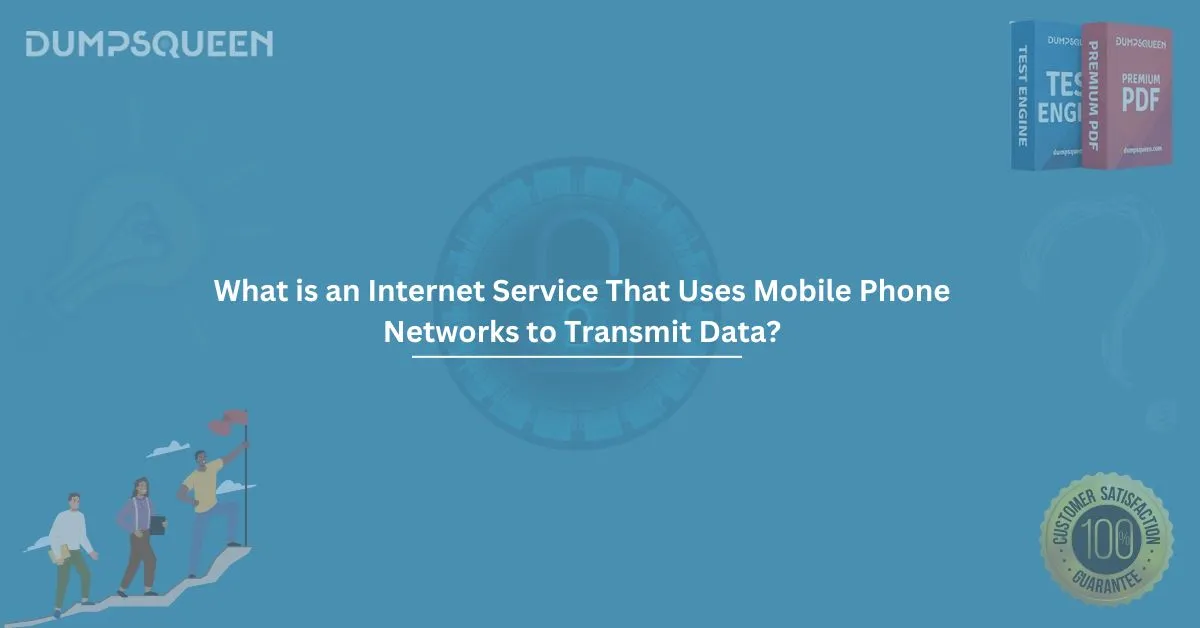The internet has become an essential part of everyday life, and access to it is crucial for communication, business, education, and entertainment. While there are many ways to access the internet, one method that has gained significant traction over the years is mobile broadband. This service utilizes mobile phone networks to transmit data, enabling users to connect to the internet anytime, anywhere, as long as they are within the coverage area of a cellular network. In this blog post, we will explore the details of mobile broadband, the technology behind it, and how it has revolutionized internet access.
What is Mobile Broadband?
Mobile broadband is an internet service that uses mobile phone networks (such as 3G, 4G, and 5G) to transmit data. Unlike traditional broadband services that require a fixed connection via cables or fiber optics, mobile broadband allows users to access the internet wirelessly by utilizing cellular networks. The term "mobile" refers to the fact that the service can be used on the go, unlike traditional broadband, which is typically limited to a fixed location.
Mobile broadband is available on various devices, including smartphones, tablets, laptops, and dedicated mobile hotspots. It provides internet connectivity wherever there is a cellular signal, making it an excellent option for people who need internet access while traveling or in areas where traditional broadband is unavailable.
How Does Mobile Broadband Work?
Mobile broadband works by transmitting data through the same cellular networks that mobile phones use to send and receive voice calls and text messages. The process begins when a device connects to a cellular tower within the coverage area. The tower sends data packets to the internet through the mobile operator’s network infrastructure, which then connects to the wider internet.
The main difference between mobile broadband and regular mobile phone services is that mobile broadband focuses on data transmission rather than voice communication. This allows users to download files, stream videos, browse the web, and use other internet services without relying on a fixed internet connection.
Types of Mobile Broadband Technologies
Mobile broadband can be categorized based on the network technology used. There are several generations of mobile networks, each offering different speeds and capabilities:
- 3G (Third Generation): 3G was the first significant upgrade to mobile networks, providing faster data speeds than previous 2G networks. It allows users to browse the web, send emails, and use video calling with relative ease, although it is slower compared to later generations.
- 4G (Fourth Generation): 4G networks offer significantly faster speeds than 3G, making it possible to stream high-definition videos, engage in video calls, and download large files with ease. Most modern mobile broadband services are based on 4G technology, which can support download speeds of up to 100 Mbps and higher.
- 5G (Fifth Generation): 5G is the latest generation of mobile broadband, offering ultra-fast speeds, low latency, and the ability to connect many devices simultaneously. It is expected to revolutionize industries such as healthcare, transportation, and entertainment by enabling technologies like augmented reality (AR), virtual reality (VR), and autonomous vehicles.
Advantages of Mobile Broadband
There are several advantages to using mobile broadband as an internet service:
- Portability: One of the most significant benefits of mobile broadband is its portability. Users can access the internet from almost anywhere, whether they are at home, in a café, or traveling. As long as there is a mobile network signal, you can stay connected.
- No Need for Fixed Infrastructure: Mobile broadband does not require the installation of cables or fiber optics, making it an ideal solution for people who live in rural or underserved areas where traditional broadband services are not available.
- Flexibility: Mobile broadband offers flexible plans, including pay-as-you-go options, unlimited data packages, and various speed tiers. This allows users to choose a plan that best suits their needs and budget.
- Simultaneous Connectivity: Many mobile broadband devices, such as hotspots, can connect multiple devices at once, allowing users to share their internet connection with others.
Disadvantages of Mobile Broadband
While mobile broadband has many advantages, there are also some limitations:
- Coverage Issues: Mobile broadband requires a cellular network, which means it is subject to coverage limitations. In remote areas or regions with poor network infrastructure, mobile broadband performance may be slower or unavailable.
- Data Caps: Many mobile broadband plans come with data limits, meaning users can only consume a certain amount of data per month before they incur extra charges or experience slower speeds.
- Speed Variations: The speed of mobile broadband can vary depending on factors such as network congestion, the device being used, and the distance from the nearest cell tower. While 4G and 5G networks offer high speeds, 3G may still be in use in some areas, offering slower connectivity.
- Battery Consumption: Using mobile broadband on devices such as smartphones or laptops can drain the battery quickly, especially when data-intensive activities like video streaming or large downloads are involved.
Mobile Broadband vs. Fixed Broadband
While mobile broadband offers flexibility and portability, it may not be the best solution for every user. Fixed broadband, such as DSL, cable, or fiber optic internet, typically offers more stable speeds, greater reliability, and higher data allowances. Fixed broadband is often a better option for households with multiple users or heavy data needs, such as streaming in 4K or working from home.
On the other hand, mobile broadband is an excellent choice for users who need internet access while on the move or in areas where fixed broadband is unavailable. For users who have a stable fixed broadband connection at home, mobile broadband can be used as a supplementary service for when they are outside the home or traveling.
Common Uses of Mobile Broadband
Mobile broadband is used for various purposes, from basic browsing to high-definition video streaming. Some common uses include:
- Remote Work: With the rise of telecommuting, mobile broadband allows workers to stay connected from virtually anywhere, making it easier to work from home, coffee shops, or while traveling.
- Entertainment: Mobile broadband enables users to stream movies, TV shows, and music on the go, making it ideal for entertainment while traveling or commuting.
- Online Gaming: High-speed mobile broadband can support online gaming, allowing users to play multiplayer games on their smartphones or tablets without needing a fixed broadband connection.
- Business Applications: Mobile broadband is also used for business applications, including cloud-based services, video conferencing, and mobile payments.
Conclusion
Mobile broadband is an internet service that uses mobile phone networks to transmit data, offering users the ability to access the internet virtually anywhere, at any time. With the development of 3G, 4G, and 5G technologies, mobile broadband has become faster, more reliable, and capable of supporting a wide range of online activities. While it may not always replace fixed broadband, it is a powerful solution for those who need internet access while on the go.
Sample Questions and Answers (MCQ)
1. What is mobile broadband?
- A. A type of broadband that uses fiber optics to transmit data.
- B. An internet service that uses mobile phone networks to transmit data.
- C. A broadband connection that requires a physical cable.
- D. An internet service that uses satellite connections to transmit data.
Answer: B. An internet service that uses mobile phone networks to transmit data.
2. Which generation of mobile broadband provides the fastest internet speeds?
- A. 2G
- B. 3G
- C. 4G
- D. 5G
Answer: D. 5G
3. What is a significant advantage of mobile broadband over fixed broadband?
- A. Higher speeds
- B. Portability and flexibility
- C. Lower cost
- D. Better coverage in remote areas
Answer: B. Portability and flexibility




